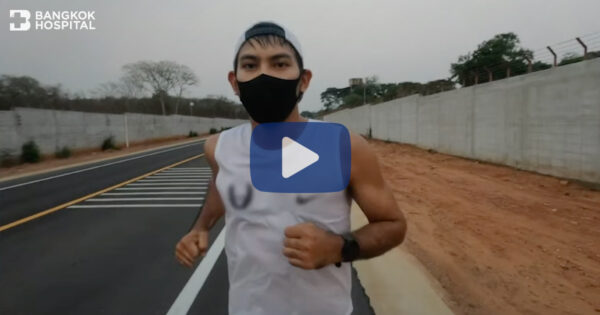Shin Splint Syndrome in Marathon Runners is a condition commonly found among runners. It can be divided into two main causes:
- From accidents or external impacts, such as bruises, muscle tears, or broken bones. The injured person often remembers the incident clearly, knowing the cause of the condition, which simplifies the treatment as it can be directed towards the cause and symptoms. With correct treatment, recovery to normal condition is possible.
- From overuse or excessively intense training, due to abnormal body structures, or the use of inappropriate running gear. In this group, chronic injuries are common because patients often do not know the cause. Symptoms usually occur after some use, and resting improves the condition, but returning to running brings back the pain. This prevents the ability to run fully. Common and interesting symptoms include:
- Shin Splint Syndrome, pain in the shin from running, is pain that occurs on the front inside part of the shin, especially on the lower part of the shin bone. This area is where the Soleus and Tibialis Posterior muscles, which control ankle inversion and plantar flexion, are located.
- The cause of shin pain from running is due to overtraining and pushing the body beyond its limits, leading to overuse injuries. When these muscles are impacted or used repetitively, it damages the periosteum, the outer covering of the bone where these muscles attach. This condition is common in:
- People who have recently started running,
- Those who increase their training intensity too much,
- Running on hard surfaces or wearing shoes with hard soles,
- People who tend to run on their toes or keep their heels off the ground at all times,
- Individuals with abnormal body structures, such as flat feet or excessive or over-pronation.
- Shin pain symptoms from running include gradually increasing pain along the inside edge of the shin, which can occur during or after stopping the run. Pressing on the area will hurt over a broad area along the bone but will not cause numbness. If symptoms occur, rest and treatment should be taken, and continuing to run or train in the same way should be avoided, as it can lead to more severe injuries like stress fractures.
- Treatment for shin pain from running initially includes:
- Resting,
- Applying ice packs,
- Taking anti-inflammatory medication,
- Physical therapy to reduce inflammation.
If the foot or leg structure is abnormal, it is recommended to switch to shoes that better fit one’s foot structure or use accessories that help reduce impact while running. Once the pain subsides, focus on strengthening and stretching the muscles, starting with low-impact exercises such as swimming, cycling, using an elliptical machine, or water running. If there’s no pain, then gradually reintegrate running by slowly increasing distance and speed. It’s advised to initially run on soft surfaces like grass, a rubber track, or a treadmill before returning to familiar grounds.
Deciding when to return to long-distance running depends on the symptoms. If the pain persists, doesn’t improve with rest, or worsens to the point of being unable to bear weight, it could be due to a stress fracture, which requires consulting a doctor for further treatment.
Additionally, if running causes numbness in the legs or feet, and moving the toes causes severe leg pain, it might indicate a compressed nerve, due to abnormal pressure in the muscle compartment. Immediate medical attention is required if these symptoms occur, as delaying treatment could lead to muscle and nerve damage, potentially leading to loss of the limb and an inability to run again.











